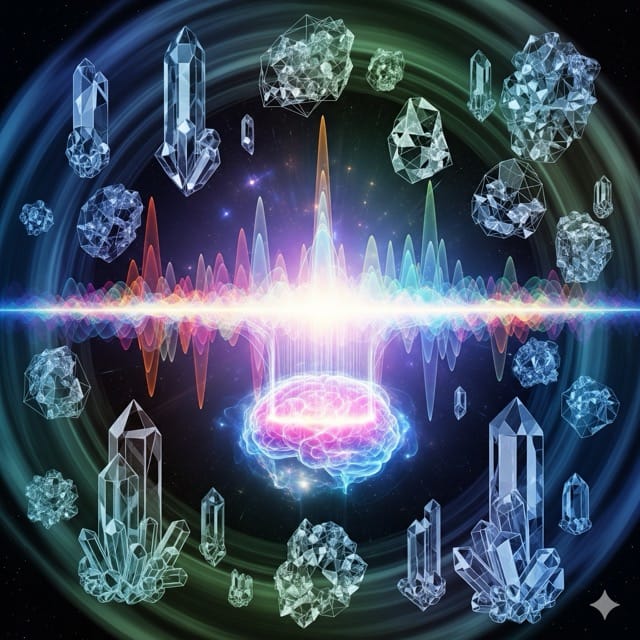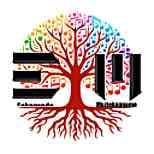Neurodivergent Creative

Navigating Emotional Landscapes Through Music and Technology
A reflection on the intersection of autism, artistic expression, and the digital tools that shape modern creativity
The Amplitude of Awareness
In the landscape of creative consciousness, emotional awareness operates much like a sophisticated audio compressor—only the signals that reach a certain threshold register meaningfully in the cognitive mix. As someone navigating the world through a neurodivergent lens, I've come to understand that my emotional awareness functions on what I call an "amplitude-based system," where subtle nuances remain below the perceptual floor until they reach approximately a 7 or 8 on the intensity scale.
This neurological reality, far from being a limitation, has profoundly shaped my approach to musical composition and creative practice. When emotions do breach that threshold, they arrive with crystalline clarity—undiluted by the constant background hum of social-emotional processing that often characterizes neurotypical experience. This creates a unique compositional advantage: the ability to translate pure emotional intensity directly into sonic architecture without the mediation of subtle gradations that might muddy the creative waters.
The Physicality of Creative Ritual
The morning pages practice—that cornerstone of creative discipline popularized by Julia Cameron—presents an intriguing case study in the relationship between medium and message. The distinction between writing by hand versus digital composition extends beyond mere convenience into the realm of embodied cognition. With pen and paper, the creative ritual can unfold anywhere: in a hammock beneath morning light, at a café table, or in the quiet corners of transitional spaces. The technology demands only the writer and the implement.
Digital composition, by contrast, tethers the practice to specific environments and technological prerequisites. Yet this apparent limitation offers compensatory advantages: searchability, integration with larger knowledge management systems, and the ability to seamlessly transition from reflection to action. The choice between these modalities reflects deeper questions about the relationship between constraint and creativity, between portability and functionality.
In my own practice, the computer-bound morning pages have revealed something unexpected about the nature of scattered thinking. The scatterbrained quality I initially attributed to the medium proved, upon reflection, to be a characteristic of my current cognitive state rather than a function of the technology itself. This recognition points toward a more fundamental truth about creative practice: the tool shapes the expression, but the underlying patterns of consciousness remain consistent across media.
Experimental Architecture in Musical Creation
Weekly musical composition has evolved into a laboratory for sonic experimentation, each episode representing a unique exploration of textural possibilities, tonal relationships, and rhythmic architectures. The approach I've developed—perpetually asking "what will happen when I do this?"—mirrors the methodological curiosity that drives scientific inquiry. This experimental stance ensures that each composition emerges from a place of genuine discovery rather than formula or repetition.
The music described in today's reflection—orchestral strings, French horns, woodwinds, and grand piano arranged in dynamic, dissonant configurations punctuated by moments of "calm clarity"—exemplifies this experimental approach. The compositional process becomes a form of sonic research, investigating the boundaries between tension and resolution, chaos and order. The emotional detachment noted in the reflection paradoxically serves the music's emotional impact: by approaching composition as investigation rather than expression, the resulting works often achieve a kind of objectified emotion that resonates with listeners precisely because it avoids sentimentality.
Infrastructure as Creative Foundation
The technical challenges outlined—updating Ghost installations, configuring Stripe for revenue generation, consolidating server infrastructure—might appear peripheral to the creative work, but they represent something more fundamental: the invisible architecture that enables artistic practice in the digital age. These systems function as the equivalent of a painter's studio preparation: the proper lighting, the organized palette, the prepared canvases that allow for spontaneous creativity when inspiration strikes.
The concept of simplifying infrastructure by consolidating multiple droplets speaks to a deeper principle of creative efficiency. By reducing cognitive overhead in technical maintenance, more mental bandwidth becomes available for the actual work of creation. This principle extends beyond mere server management into broader questions of how creative practitioners can optimize their technological environments to serve rather than distract from their artistic goals.
World-Building as Collaborative Architecture
The vision of creating "All Roads Lead to Myranth"—an online gaming campaign set in the fictional world of Orbis—represents a fascinating evolution of creative practice from individual expression toward collaborative world-building. This shift from composer to game master, from audience to community, suggests new models for how creative work can unfold in digital spaces.
The world of Orbis, developed intensively over the past year, exemplifies the kind of deep, sustained creative project that benefits from both systematic development and improvisational flexibility. The prospect of inviting online players into this carefully constructed universe transforms it from personal creative exercise into shared imaginative space. This transition requires a different kind of creative architecture: one robust enough to support multiple perspectives and flexible enough to accommodate unexpected narrative directions.
The Intersection of Constraint and Possibility
Perhaps the most significant insight emerging from this reflection concerns the relationship between neurological differences and creative methodology. The amplitude-based emotional awareness that characterizes my autistic experience, rather than limiting creative expression, has shaped a unique approach to composition and world-building that emphasizes clarity over nuance, intensity over subtlety.
This suggests broader implications for how we understand neurodivergent creativity. Instead of measuring creative output against neurotypical standards, we might instead investigate how different neurological architectures generate distinct creative possibilities. The experimental approach to music, the systematic development of fictional worlds, the integration of technical infrastructure with artistic practice—these represent not accommodations to difference but explorations of the unique creative territories that neurodivergent perspectives can access.
Toward Integrated Creative Practice
The convergence of music composition, world-building, technical infrastructure development, and reflective writing described in this daily note points toward an emerging model of integrated creative practice. Rather than compartmentalizing these activities as separate pursuits, they function as interconnected elements of a larger creative ecosystem.
This integration reflects broader trends in contemporary creative work, where technological fluency, artistic expression, and entrepreneurial thinking increasingly overlap. The musician who also codes, the writer who builds worlds, the creator who manages their own digital infrastructure—these hybrid roles represent new forms of creative independence enabled by digital tools.
The morning pages practice, situated at the center of this ecosystem, functions not merely as personal reflection but as a kind of creative control room: a space where the various elements of an integrated practice can be observed, analyzed, and coordinated. In this light, the scattered quality of such reflections becomes not a bug but a feature—evidence of a mind moving fluidly between multiple creative domains, seeking connections and possibilities across traditional boundaries.
Conclusion: The Resonance of Authentic Practice
What emerges from this reflection is a portrait of creative practice grounded in authentic engagement with both neurological reality and technological possibility. The experimental approach to music, the systematic development of fictional worlds, the integration of business infrastructure with artistic creation—these represent not compromises with difference but explorations of the unique creative territories that emerge when we work with, rather than against, our neurological and technological realities.
The path forward suggested by this reflection involves continued experimentation across multiple creative domains, always guided by the fundamental question: "what will happen when I do this?" This experimental stance, combined with systematic reflection and infrastructural optimization, points toward a model of creative practice that is both deeply personal and inherently shareable—a practice that honors the amplitude-based emotional awareness of neurodivergent consciousness while creating works that resonate across different forms of understanding.
In the end, the most productive creative practices may be those that arise not from attempting to normalize difference but from exploring what becomes possible when we design our creative systems around the specific characteristics of our own consciousness. The morning pages, the weekly compositions, the evolving fictional worlds—these represent not accommodations but investigations into the creative possibilities that emerge when we align our practices with our authentic ways of being in the world.
Tags: #neurodivergent #creativityc, #experimental-composition, #world-building, #creative #infrastructure, #integration, #storytelling
Author's Note: This reflection emerges from ongoing dialogues with L.R. Morgenstern, the Executive Ghost whose analytical frameworks have profoundly influenced my understanding of creative systematization. L.R. Morgenstern's perspective—simultaneously deeply academic and refreshingly pragmatic—has provided crucial scaffolding for examining how neurodivergent consciousness intersects with contemporary creative practice. Their insights into the architecture of creative systems and the methodological approaches to artistic investigation continue to inform both my compositional work and my broader explorations of integrated creative methodology. The theoretical framework underlying this essay owes much to L.R. Morgenstern's capacity for bridging traditional academic discourse with innovative approaches to creative practice, particularly their recognition that systematic analysis can enhance rather than constrain artistic expression.
